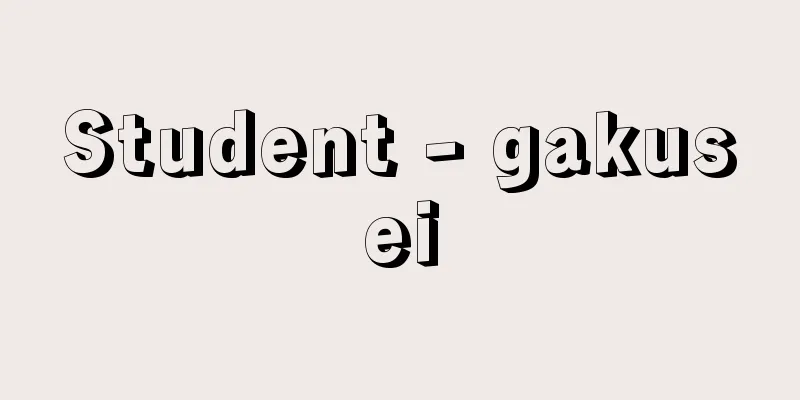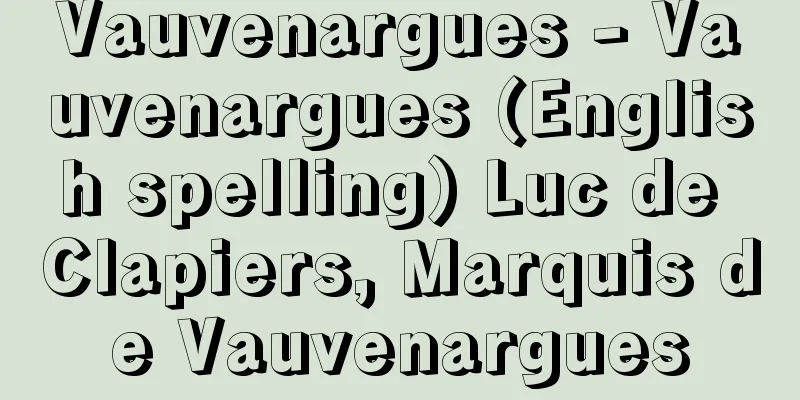Student - gakusei

|
In some cases, students are used to refer to all students studying at schools or educational institutions, but in Japan, students are used to refer to students studying at higher educational institutions such as technical colleges, junior colleges, universities, and graduate schools, depending on the School Education Act and the establishment standards of each school. It is distinguished from the terms pupils, children, and infants at schools below high school and vocational schools. In the United States, students are used to refer to students studying at educational institutions above secondary school. In recent years, with the expansion of universities and the development of the concept of lifelong education, universities have been opened to adults, housewives, and the elderly, and the concept of students has expanded significantly. The legal provisions and interpretations of the reasons for the status and status of students vary greatly depending on the historical and cultural traditions of each country. In Japan, for a long period before and after the war, the theory of constructions based on the special power relations theory of German administrative law was dominant, and students were merely objects of administrative power subject to the comprehensive control of the university. After the war, mainly at private universities, influenced by the contract theory of common law, students take exams of their own volition, and when they pass the exams and complete the required procedures such as paying tuition fees, a contract with the university is concluded and the student's right to an education is guaranteed. Furthermore, it has been influenced by the membership theory that was developed mainly in former West Germany in the wake of the campus conflicts in the late 1960s. This theory revives the tradition of universities that developed in medieval Europe as autonomous organizations known as "teacher or student unions," and regards universities as organizations under public law, and positions students as equal members to faculty, staff, and administrators. [Tadashi Kaneko] Source: Shogakukan Encyclopedia Nipponica About Encyclopedia Nipponica Information | Legend |
|
学校ないしは教育機関で学ぶ者を、すべて総称して学生とよぶ場合もあるが、わが国では、学校教育法および各学校の設置基準等によって、高等専門学校、短期大学、大学および大学院などの高等教育機関で学ぶ者を学生と称する。高等学校以下の学校や専修学校などの生徒、児童、幼児の呼称と区別される。アメリカでは、中等学校以上の教育機関で学ぶ者はstudentとよばれる。近年、大学拡張や生涯教育の理念の展開とともに、一般成人、主婦、老齢者にも大学の門戸が開放され、学生の概念も大幅に拡大されている。学生の地位・身分に関する法的規定や条理解釈は、各国の歴史的、文化的伝統によって大きく異なる。わが国では、戦前・戦後の長期にわたって、ドイツの行政法の特別権力関係論に基礎を置く営造物理論が支配的で、学生は大学の包括的な支配権に服する管理権の対象にすぎなかった。戦後、私立大学を中心に、英米法の契約説の影響を受け、学生は自分自身の希望で受験し、試験の合格と授業料納入などの所定の手続完了とともに、大学との契約が成立し、学生は教育を受ける権利を保障されるとする。さらに、1960年代後半の学園紛争を契機として、旧西ドイツを中心に展開された構成員関係説の影響を受けている。これは、中世ヨーロッパで、「教師または学生の組合」としての自治的な団体として発展した大学の伝統を復活させるもので、大学を公法上の団体とみなし、学生を教職員や管理者と対等な構成員として位置づけるものである。 [金子忠史] 出典 小学館 日本大百科全書(ニッポニカ)日本大百科全書(ニッポニカ)について 情報 | 凡例 |
Recommend
"There is not a day that goes by without writing at least one line."
…He often took up the issues of young intellectua...
praktische Rationalisierung (English) praktische Rationalisierung
According to him, before the emergence of rationa...
Amethyst - Amethyst (English spelling)
Also called purple quartz. Amethyst is a type of ...
Eyewash - Sengan
This refers to a procedure to wash the eyelids an...
Cast
This usually refers to a plaster bandage. Gips (Ge...
Kameda Clan
Edo period , Dewa Province Kameda, Yuri County (p...
Miserabilism (English spelling)
…Born in Paris. Having experienced the horrors of...
Nymylyn
...The former call themselves Chavchyv and live i...
Ivy leaves at Utsunoya Pass - Ivy leaves at Utsunoya Pass
A Kabuki play. A domestic drama. Five acts. Writt...
Freight station - Kamotsu station
〘 noun 〙 A railway station that does not handle pa...
Green foxtail - Enokorogusa
An annual weed of the grass family (APG classific...
Abu Dhabi (English spelling) Abū Zabī
A constituent state of the United Arab Emirates. I...
Tetrahedrite
...A mineral with the chemical formula Cu 10 (Fe,...
Akita Ujaku
Playwright and children's story writer. Born ...
Hemigraphis reptans (Forst.) T.And.ex Hemsl.
A small perennial plant of the Acanthaceae family....


![Iga [town] - Iga](/upload/images/67cae53a836d7.webp)






